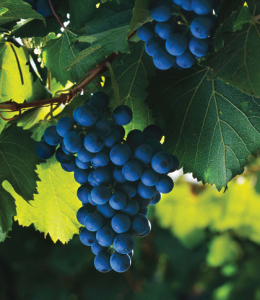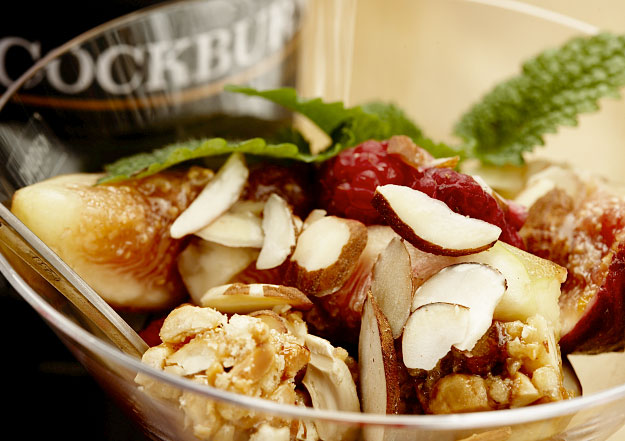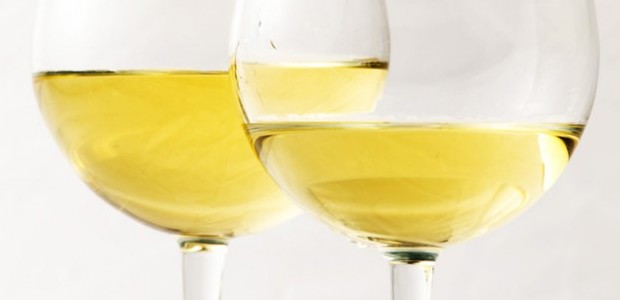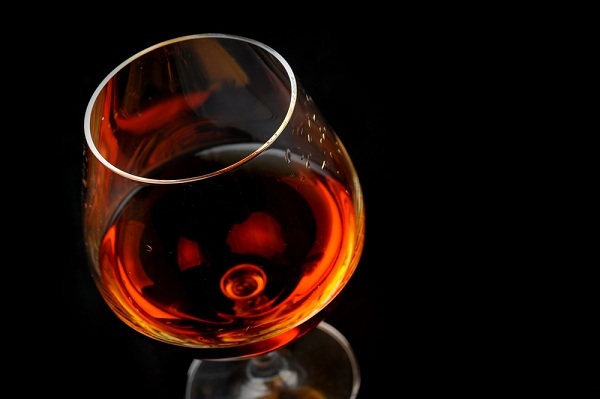The Glass Less Tasted

A while back, I lamented about Chardonnay being the only white wine most people were familiar with, and that there is a group of people in the wine industry that referred to themselves as the “ABC (Anything But Chardonnay) crowd.”
This also holds true for red wines, but is not quite as extreme. Americans rarely venture beyond Cabernet Sauvignon or Merlot in their red preferences. Pinot Noir has seen some popularity since the movie Sideways a few years ago, and Zinfandel has always had a bit of cult following, being one of California’s signature grapes. Syrah (Shiraz) has also settled into a niche on most store shelves.
There’s a wide world of grapes out there that make excellent wine beyond these few, however and in this column, I wanted to touch on some others and perhaps try to encourage discovery by those whose drinking habits are stuck in the mundane Merlots.
Malbec
 The first grape on the list, and one that has become quite trendy lately, is Malbec. The grape has unconfirmed origins, but the two most popular theories are that it either came to France from Hungary by way of a peasant named Malbec, or that it originated somewhere in Northern Burgundy. Regardless, the grape found its traditional home as a minor blending variety in Bordeaux. The hot and dry vineyards of Argentina are where it has come to shine though, producing dark, meaty wines that are excellent with grilled foods.
The first grape on the list, and one that has become quite trendy lately, is Malbec. The grape has unconfirmed origins, but the two most popular theories are that it either came to France from Hungary by way of a peasant named Malbec, or that it originated somewhere in Northern Burgundy. Regardless, the grape found its traditional home as a minor blending variety in Bordeaux. The hot and dry vineyards of Argentina are where it has come to shine though, producing dark, meaty wines that are excellent with grilled foods.
Carmenere
Next is another South American success story, Carménère. This grape also traditionally hails from Bordeaux, but is a rarity there now. Where it’s found a home is on the other side of the Andes in Chile. The Chileans had mistakenly believed it to be Merlot for a number of years, as the two varieties can be very similar in the vineyard. A French enology professor correctly identified the variety in the early 90s though, and it has since become Chile’s signature grape. The wines tend to have dark fruit and spice flavors with soft tannins.
Tempranillo
Native to Spain, Tempranillo has seen a resurgence as a premium wine thanks to jumps in quality control and a very recent trend in the popularity of Spanish wines. The name translates to “a little early” in reference to the grape’s behavior in the vineyard. It’s typically associated with the Rioja region, but many people say it shines in the Ribera del Duero. Tempranillo is commonly blended with Grenache (Garnacha) in some portion. The wines age well and typically have herbal, smoky, berry flavors with a distinct ruby color. They go exceptionally well with game or cured meats. I highly recommend these with traditional turkey and ham dinners.
Nero d’Avola
A relative newcomer to the American scene is a Sicilian grape called Nero d’Avola. It loves hot and dry climates, and many consider it to have characters similar to top Shiraz with peppery and soft fruit flavors. Personally, I think there is no better wine to accompany a red sauce. Anything made with tomatoes goes with Nero d’Avola like peas and carrots. The best spaghetti Bolognese wine there is, hands down.
Petite Sirah
A wine gaining a bit of a following lately is Petite Sirah (Durif). Native to France, the grape never really found a home there as it much prefers warmer and drier climates. Where it has done well is the United States and Australia. The wines are inky dark, and typically have flavors of dark fruit, plum, and blueberry with noticeable herbal and pepper character. Petite Sirah holds acidity well and has good tannin structure thanks to its thick skins and high skin to juice ratio. The wine is commonly blended with Zinfandel, as the two complement each other exceptionally well. Petite Sirah makes an excellent outdoor barbecue wine.
Carignane
The last grape I’ll mention here is Carignane, mostly because it joins Grenache as part of the blend for Spanish Priorat, which with recent quality jumps is considered by some the best wines of Spain. Carignane produces dark, smoky wines with strong acid and tannin. It shows best in hot, dry climates when the vines become decades old.
Many other red wines are available, of course, beyond the major grapes, but I only have so much room to write. These hopefully will give you a start on some that are easier to find, developing a bit of popularity, and go well with outdoor foods now that the weather is warming up. So venture down that road less tasted and enjoy something new.
Remember to always drink responsibly.




